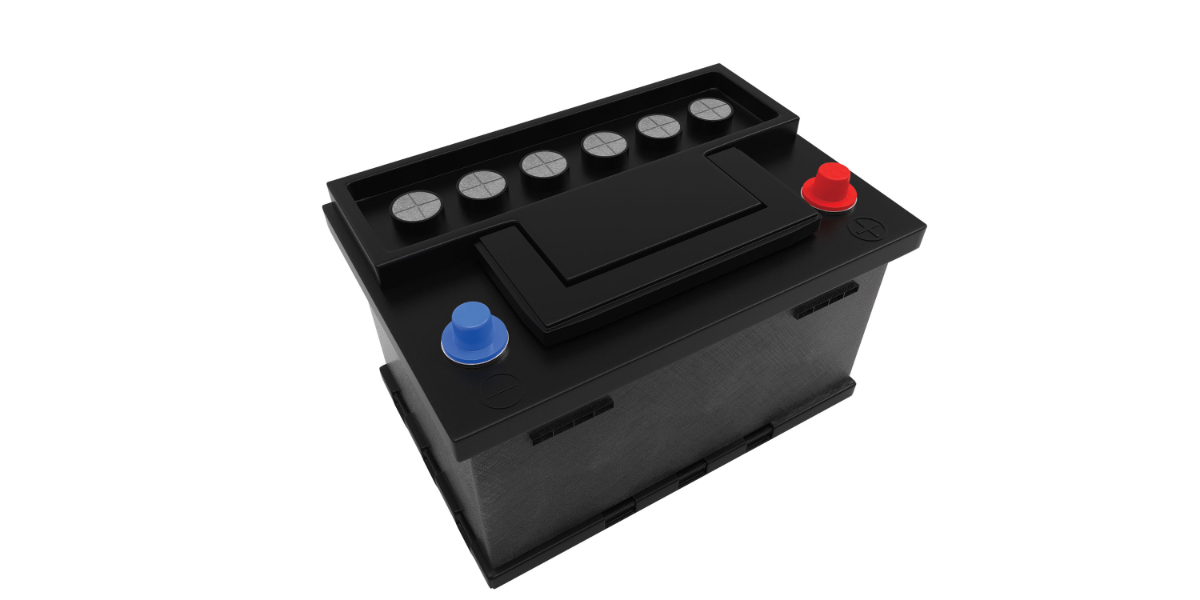Technical Glossary of RV Terms
Image Caption:
The following glossary is designed to take the mystery out of commonly used terms when discussing vehicles, towing, service and weights. With a little study, you will be able to communicate with your RV dealer, service technician, and above all, hold your own in any serious campfire discussion.
ADJUSTABLE BALL MOUNT — An adjustable ball mount allows the ball to be raised, lowered and tilted in small increments to allow fine-tuning of the spring bar setup and to compensate for tow vehicle “squat,” which occurs after the trailer coupler is lowered onto the ball.
AXLE RATIO — The final drive gear ratio created by the relationship between the ring and pinion gears and the rotation of the driveshaft. In a 4.10:1 axle ratio, for example, the driveshaft will rotate 4.1 times for each rotation of the axle shaft (wheel).
BALL MOUNT —The part of the hitch system that supports the hitch ball and connects it to the trailer coupler. Ball mounts are available in load-carrying and weight-distributing configurations.
BRAKE CONTROLLER — A control unit mounted inside the vehicle that allows electric trailer brakes to become activated in harmony with the braking of the tow vehicle. This device can be used to adjust trailer brake intensity or to manually activate the trailer brakes.
BREAKAWAY SWITCH — A safety device that activates the trailer brakes in the event the trailer becomes accidentally disconnected from the hitch while traveling.
BUMPER-MOUNT HITCH — This type of hitch is available in two configurations: A bracket with a ball mounted to the bumper or a ball is attached to the bumper (typically on pickup trucks). These hitches have very limited RV applications.
CLASS A MOTORHOME — An RV with the living accommodations built on or as an integral part of a self-propelled motor vehicle. Models range from 24 to 40 feet long.
CLASS B MOTORHOME — Also known as a camping van conversion. These RVs are built within the dimensions of a van, but with a raised roof to provide additional headroom. Basic living accommodations inside are ideal for short vacations or weekend trips. Models usually range from 16 to 21 feet.
CLASS C MOTORHOME — An RV with the living accommodations built on a cutaway van chassis. A full-size bed in the cabover section allows for ample seating, galley and bathroom facilities in the coach. Also called a “mini-motorhome” or “mini.” Lengths range from approximately 16 to 32 feet.
COUPLER — The part of a trailer A-frame that attaches to the hitch ball.
DETONATION — Also known as “knock” or “ping,” this is a condition in which some of the unburned air/fuel in the combustion chamber explodes at the wrong time in the ignition cycle, increasing mechanical and thermal stress on the engine.
DINGHY — A vehicle towed behind a motorhome, sometimes with two wheels on a special trailer called a tow dolly, but often with all four wheels on the ground.
DW — Dry weight. The manufacturer’s listing of the approximate weight of the RV with no supplies, water, fuel or passengers.
ENGINE OIL COOLER — A heat exchanger, similar to a small radiator, through which engine oil passes and is cooled by airflow.
FIFTH-WHEEL TRAILERS — Fifth-wheel trailers are designed to be coupled to a special hitch that is mounted over the rear axle in the bed of a pickup truck. These trailers can have one, two or three axles and are the largest type of trailer built. Because of their special hitch requirements, fifth-wheel trailers can only be towed by trucks or specialized vehicles prepared for fifth-wheel trailer compatibility.
FINAL DRIVE RATIO — The reduction ratio found in the gearset that is located farthest from the engine. This is the same as the axle ratio.
FRAME-MOUNT HITCH — Class II and higher hitches are designed to be bolted to the vehicle frame or cross members. This type of hitch may have a permanent ball mount, or may have a square-tube receiver into which a removable hitch bar or shank is installed.
GAWR (Gross Axle Weight Rating) — The manufacturer’s rating for the maximum allowable weight that an axle is designed to carry. Gawr applies to tow vehicle, trailer, fifth-wheel and motorhome axles.
GCWR (Gross Combination Weight Rating) — The maximum allowable weight of the combination of tow vehicle and trailer/ fifth-wheel, or motorhome and dinghy. It includes the weight of the vehicle, trailer/fifth-wheel (or dinghy), cargo, passengers and a full load of fluids (fresh water, propane, fuel, etc.).
GTWR (Gross Trailer Weight Rating) — Maximum allowable weight of a trailer, fully loaded with cargo and fluids.
GVWR (Gross Vehicle Weight Rating) — The total allowable weight of a vehicle, including passengers, cargo, fluids and hitch weight.
HITCH RATINGS — Hitches are rated by the manufacturer according to the maximum amount of weight they are engineered to handle. Class I travel trailer hitches are rated for towing as much as 2,000 pounds. Class II units are for loads up to 3,500 pounds. Class III has a rating of 7,500 pounds, and Class IV is for loads of up to 10,000 pounds. Class V hitches are designed for towing loads up to 14,000 pounds. These ratings based on class category may vary depending on the manufacturer. Fifth-wheel ratings range to 25,000 pounds. The weight rating refers to the total weight of the trailer/fifth-wheel, with freshwater tank full, propane tanks full, all supplies on-board and ready to travel.
HITCH WEIGHT — The amount of weight imposed on the hitch when the trailer/fifth-wheel is coupled. Sometimes referred to as conventional trailer “tongue weight.” Hitch weight for a travel trailer can be 10-15 percent of overall weight; fifth-wheel hitch weight is usually 18 to 20 percent of the overall weight.
LIMITED-SLIP DIFFERENTIAL — A differential that is designed with a mechanism that limits the speed and torque differences between its two outputs, ensuring that torque is distributed to both drive wheels, even when one is on a slippery surface.
NCC (Net Carrying Capacity) — Maximum weight of all passengers (if applicable), personal belongings, food, fresh water, supplies — derived by subtracting the UVW from the GVWR.
PAYLOAD CAPACITY — The maximum allowable weight that can be placed in or on a vehicle, including cargo, passengers, fluids and fifth-wheel or conventional hitch loads.
RECEIVER — The portion of a hitch that permits a hitch bar or shank to be inserted. The receiver may be either 11/2-, 15/8- or 2-inch square; the smallest being termed a mini-hitch.
SAFETY CHAINS — A set of chains that are attached to the trailer A-frame and must be connected to the tow vehicle while towing. Safety chains are intended to keep the trailer attached to the tow vehicle in the event of hitch failure, preventing the trailer from complete separation. They should be installed using an X-pattern, so the coupler is held off the road in the event of a separation.
SHANK — Also called a hitch bar or stinger, the shank is a removable portion of the hitch system that carries the ball or adjustable ball mount, and slides into the receiver.
SPRING BAR — Component parts of a weight-distributing hitch system, the spring bars are installed and tensioned in such a manner as to distribute a portion of the trailer’s hitch weight to the front axle of the tow vehicle and to the axles of the trailer.
STINGER — See “shank.”
SWAY — Fishtailing action of the trailer caused by external forces that set the trailer’s mass into a lateral (side-to-side) motion. The trailer’s wheels serve as the axis or pivot point. Also known as “yaw.”
SWAY CONTROL — Devices designed to damp the swaying action of a trailer, either through a friction system or a “cam action” system that slows and absorbs the pivotal articulating action between tow vehicle and trailer.
TAIL SWING — Motorhomes built on chassis with short wheelbases and long overhangs behind the rear axle are susceptible to tail swing when turning sharply. As the motorhome moves in reverse or turns a corner, the extreme rear of the coach can move horizontally and strike objects nearby (typically road signs and walls). Drivers need to be aware of the amount of tail swing in order to prevent accidents.
TONGUE WEIGHT — The amount of weight imposed on the hitch when the trailer is coupled. See “hitch weight.”
TOW BAR — A device used for connecting a dinghy vehicle to the motorhome when it’s towed with all four wheels on the ground.
TOW RATING — The manufacturer’s rating of the maximum weight limit that can safely be towed by a particular vehicle. Tow ratings are related to overall trailer weight, not trailer size, in most cases. However, some tow ratings impose limits as to frontal area of the trailer and overall length. Tow ratings are determined by the vehicle manufacturer according to several criteria, including engine size, transmission, axle ratio, brakes, chassis, cooling systems and other special equipment.
TRAILER BRAKES — Brakes that are built into the trailer axle systems and are activated either by electric impulse or by a surge mechanism. The overwhelming majority of RVs utilize electric trailer brakes that are actuated when the tow vehicle’s brakes are operated, or when a brake controller is manually activated. Surge brakes utilize a mechanism that is positioned at the coupler, that detects when the tow vehicle is slowing or stopping, and activates the trailer brakes via a hydraulic system (typically used on boats).
TRANSMISSION COOLER — A heat exchanger similar to a small radiator through which automatic transmission fluid passes and is cooled by airflow.
TRAVEL TRAILER — Also referred to as “conventional trailers,” these types of rigs have an A-frame and coupler and are attached to a ball mount on the tow vehicle. Travel trailers are available with one, two or three axles. Depending upon tow ratings, conventional trailers can be towed by trucks, cars or sport-utility vehicles.
UMBILICAL CORD — The wiring harness that connects the tow vehicle to the trailer, supplying electricity to the trailer’s clearance and brake lights, electric brakes and a 12-volt DC power line to charge the trailer’s batteries. An umbilical cord can also be the power cable that is used to connect to campground 120-volt AC electrical hookups,
UVW (Unloaded Vehicle Weight) — Weight of the vehicle without manufacturer’s or dealer-installed options and before adding fuel, water or supplies.
UTQGL (Uniform Tire Quality Grade Labeling) — A program that is directed by the government to provide consumers with information about three characteristics of the tire: tread wear, traction and temperature. Following government prescribed test procedures, tire manufacturers perform their own evaluations for these characteristics. Each manufacturer then labels the tire, according to grade.
WEIGHT-CARRYING HITCH — Also known as a “dead-weight” hitch, this category includes any system that accepts the entire hitch weight of the trailer. In the strictest sense, even a weight-distributing hitch can act as a load-carrying hitch if the spring bars are not installed and placed under tension.
WEIGHT-DISTRIBUTING HITCH — Also known as an “equalizing” hitch, this category includes hitch systems that utilize spring bars that can be placed under tension to distribute a portion of the trailer’s hitch weight to the tow vehicle’s front axle and the trailer’s axles.
YAW — Fishtailing action of the trailer caused by external forces that set the trailer’s mass into a lateral (side-to-side) motion. The trailer’s wheels serve as the axis or pivot point. Also known as “sway.”





